The Grappler’s Blueprint to Breaking Legs in MMA
The missing ingredients that make leg locks dangerous in real fights
Are you scared of going for leg locks in MMA because you will get your face pounded badly? Are you one of those who thinks that leg locks don't work because of punches? Are you hopeless about the utility of guard in MMA? If that sounds like you, get ready — because you might be dead wrong.
Leg locks can absolutely work in MMA — if done right. They’re devastating, fight-ending weapons that make the ground game way more dangerous and complex.
By picking the right leg entanglements, knowing when to focus on control, when to attack or when to let go, you can develop a complex leg lock game that will allow you to:
Neutralize ground and pound.
Stand up safely.
Win rounds from your back.
Break legs and end fights.
I posted an article about leg locks in MMA inspired by the recent Cory Sandhagen victory by knee injury in 50/50. In that article I talked about how underdevelop is the leg lock game in MMA and how the first ones to exploit it will have a great advantatge in the future. I did also promise to give a guide on how to develop high level leg locks for MMA, so here it is.
With nothing more to say, let's dive into it.
Understanding The Problem
Before we get into the strategy of how to apply leg locks in MMA, we need to understand what problem we're actually trying to solve.
The highest-percentage ways of finishing a leg lock come from leg entanglements — or “ashi garami.” While there are a few non-entanglement leg locks that can work, they’re far less reliable.
Leg entanglements work because they give you hip attachment to one of your opponent’s legs, allowing you to immobilize them long enough to hunt the submission. Sound familiar? That’s exactly what we do in mount, back control, or side control: establish control, then finish.
So forget the idea that leg locks are some chaotic, out-of-nowhere move. Done right, they follow the same principles as the rest of jiu-jitsu. They're about control.
Now, here's the unique problem in MMA: ground and pound. When you're finishing a leg lock, your hands are usually committed to your opponent’s foot, which often leaves your face exposed. That means you're giving your opponent a chance to smash your face while you're focused on breaking their leg.
But here’s the catch: to ground and pound effectively, the top player needs a base. Whether they’re on their knees, feet, or something in between, they need balance and posture. They also need their hands to be unweighted and free to punch.
So what if we deny them that?
If we can disrupt their base or force them to post, they can't hit us, and that’s when leg locks become safe and effective. Yes, we're still vulnerable to counter-leg locks, but that’s pure jiu-jitsu — and not today's topic.

Understanding Ashi Garami
The key to making leg locks work isn’t in the leg lock itself — it’s in what comes before: the leg entanglement.
There are several types of ashi garami, each offering different levels of control and safety. Some work great in sport jiu-jitsu but fall apart under strikes. Others, if used properly, can neutralize punches and allow devastating submissions. That’s why understanding the structure and purpose of ashi garami is essential in MMA.
So what’s our goal with any ashi garami?
Simple: break the opponent’s base.
We want to either:
Force them to post their hands on the mat (making it harder to punch), or
Make them sit to their butt (no base = no power).
If we do that, we make ground and pound ineffective — and now we can attack.
We can categorize leg entanglements in two main ways:
1. By the position of the entangled leg:
Straight leg entanglement: the opponent’s foot and hip stay on the same side of your centerline.
Cross leg entanglement: the foot crosses to the opposite side of your body relative to their hip.
2. By the position of your feet:
Inside: your feet are threaded inside your opponent’s legs.
Outside: your feet are in the outside of your opponent's hip.
In between: one foot in, one foot out.
Based on these categories, here are the 6 major leg entanglement positions:
Irimi ashi garami (straight, one foot in, one foot out)
Cross ashi garami (same as before but the entangled leg crossed the centerline)
Outside ashi (straight, both feet outside)
Inside ashi (straight, both feet inside)
50/50 (crossed, both feet outside)
The Saddle — also known as cross ashi, honeyhole, inside sankaku, 411… call it what you want (crossed, both feet inside).
Each of these positions has its own pros and cons in MMA. While I won’t go deep into all of them here, I recommend checking out this breakdown by Less Impressed More Evolved, who does a fantastic job summarizing the mechanics of each one.
Still, remember: what matters most isn’t knowing their names, but knowing which ones keep you safe from punches while giving you control.
Understanding Leg Locks
Now that we’ve covered the structure of leg entanglements, let’s talk about the actual attacks — because unless you’re Cory Sandhagen and plan on submitting people just by controlling them from 50/50 until their knees explode, you’ll need more than just positioning.
There are countless variations of leg submissions, but the are three main families:
Ankle lock variations
Heel hook variations
Toe hold variations
Here’s the deal: you don’t need to be a master of all three. In fact, specializing in toe holds for MMA is almost as useless as getting a computer science degree in 2025 (just kidding).
Your primary weapon should be the heel hook — it’s the most dangerous and versatile option you can develop for leg locks in MMA.
⚠️ What About Ankle Locks?
Let’s clarify something: ankle locks can be brutally effective when done correctly. Modern variations like the Aoki lock or the Test Lock are capable of serious damage.
Still, I won’t go too deep into them for now. While heel hook innovation in jiu-jitsu exploded over a decade ago, ankle locks are still being figured out in jiu-jitsu — let alone MMA. We just don’t have the same technical depth or proven systems around them yet for a MMA context.
That said, there’s one important development worth mentioning: the achilles grip used in ankle locks offers more control than the traditional heel hook grip. It locks the leg in place better, which helps you avoid advanced back takes and guard passes in jiu-jitsu.
Of course, those aren’t the main threats in MMA — you’re not defending against fancy berimbolos or crab rides, you’re trying not to get punched in the mouth. So while this grip offers more positional stability, it’s not clear how much of that value transfers into an MMA context.
For ankle locks to become truly viable in MMA, they’ll need further evolution in both positional control and defensive safety — which, at the moment, we just don’t fully have.
Let’s move on to what we do have: heel hooks.
Outside vs Inside
If you’re in a straight ashi garami variation, you’ll have access to the outside heel hook. If instead you’re in a cross ashi garamis, you’ll be able to attack the inside heel hook. But which one should we prioritize?
In practice, outside heel hooks are much harder to finish with strong breaking mechanics. Only a handful of high-level grapplers are able to consistently finish with them. In contrast, inside heel hooks are far more powerful and can generate devastating breaks even with slight misalignments. So if you want to maximize your leg lock game in the shortest amount of time, focus on mastering inside heel hooks first.
The main leg entanglements for outside heel hooks are:
Outside ashi
Inside ashi
Irimi ashi can also be used, but against skilled opponents, it generally won’t provide enough control for the finish — although it can help to expose the heel.
For inside heel hooks, the most reliable entanglements are:
50/50 variations
The saddle (inside sankaku)
Before going into the actual finish, let's finally adress the main problem we are trying to face…
Ashi Garami vs. a Standing Opponent
If your opponent is standing and has a strong base, they can strike you. That’s why your first priority in MMA is to break their base — either by forcing them to post their hands on the mat or sit on their butt. This not only exposes them for attacks but also removes the threat of ground and pound.
Each ashi garami uses different destabilization mechanics. Let’s break down which positions are better suited for opponents who are still on their feet.
Why Outside Ashi Fails in MMA
Outside ashi provides good outward rotation, which can force the opponent’s balance to the outside. The problem is: their entangled leg is also on that side, giving them a strong post. If they simply rotate their knee inward, they can stay standing and strike freely.
⚠️ This is exactly what happened to Garry Tonon when he got knocked out from outside ashi — his opponent stayed up and punched through.
So the first rule is: never use outside ashi against a standing opponent in MMA.
Irimi Ashi: Creating a Rotational Dilemma
Irimi ashi offers similar external rotation power, but also allows you to switch immediately to inside ashi, giving you internal rotation and better off-balancing options.
This creates a rotational dilemma: If your opponent resists external rotation, you can switch to internal. If they turn internally, you follow with a reap and threaten the outside heel hook.
Look a this example by Gordon Ryan, he first threats external rotation, and when his opponent rotates internally, Gordon follows him with a reap and finishes the outside heel hook.
Finishing the outside heel hook might be too optimistic, but the goal is to make them fall. Once they hit the mat, you’re safe — and now you can finish, ride out the round, or stand up.
So force your opponent to keep rotating. The worst-case scenario is that you lose control of the leg and your opponent disengages, which means you can stand back up.
The Saddle: It Works?
The saddle is the strongest breaking position for the inside heel hook because it allows to apply strong internal hip pressure on the knee, which is what we look for in an inside heel hook. Some of the entries from a standing position (like the kani basami or some type of roll) get you directly to the ground with it, doing the destabilization work.
That being said, the saddle presents some problems in MMA:
Against an standing opponent is unrealistic
If you try to entangle to the saddle against an standing opponent, in the proccess of getting there you can get counter leg locked badly (it happened to me in competition)
It's quite hard to expose the heel even from the ground
If you don't have the heel, your opponent can spin out of it quite easily
Why 50/50 Is The Answer
50/50 gives you strong outside rotational pressure like outside ashi, but with one key difference: the entangled leg is crossed past the opponent’s centerline. This means their base on that side is weaker.
If they rotate their knee internally, it might be hard to put them down — but not nearly as hard as with outside ashi. The best option here is to rotate yourself internally, get your head between their legs, and pop out on the far side, landing in backside 50/50.
This is probably the safest and strongest leg lock position in MMA:
You’re behind your opponent
They can’t strike you
They can’t counter leg lock you (if your feet are positioned safely)
Their heel is exposed
A great example is Cory Sandhagen — in his last fight, he entered backside 50/50 in exactly this way. Pay attention to his entry mechanics — they’re the key point here.
The Final Adjustment: Modified Backside 50/50
Backside 50/50 has one small weakness: your opponent can rotate back to regular 50/50. This isn’t the end of the world — they’re now seated and can't hit you hard — but you’ve lost some control.
However, if you already have the heel and they spin back to 50/50, they’ll torque their own knee — just like BJ Penn did against Ryan Hall. Hall had the heel caught, BJ tried to turn out, and tore his own knee in the process.
To eliminate even that small risk, you can make one small adjustment: take your bottom leg and hook their far leg.
This denies their ability to spin at all.
I’m not sure if this position has a specific name — maybe “backside cross ashi” or “modified backside 50/50” — but whatever it’s called, it’s the ultimate finishing position for MMA leg locks.
Catching the Secondary Leg
One of the most powerful ways to destabilize your opponent from a leg entanglement is to control both legs. We already control the entangled leg, but the secondary leg is often free at first — and that’s a problem, especially in MMA. That’s why catching the secondary leg should be a top priority whenever it’s available.
Even from an outside ashi, if you’re able to catch the secondary leg, you can force a standing opponent to fall to his butt. That’s how important it is.
So as a rule: any time the secondary leg is within reach, grab it. Use it to off-balance the top player and force them to post their hands or sit down.
Now, what if you can’t catch it?
In jiu-jitsu, you can afford to take your time. You can work slowly, hand fight, and look to off-balance the opponent in phases. But in MMA, you don’t have that luxury — your opponent can strike. So if you’re for example in outside ashi without the secondary leg and your opponent is still standing, the safest choice is often to let go and move. That might mean standing up, initiating a scramble, or pushing them away — anything to avoid ground and pound.
🧠 Key idea: In MMA, if you don’t have the secondary leg, you probably don’t have the time to work for it.
But the secondary leg is useful for more than just destabilizing. Once you’ve broken your opponent’s base, you want to keep them there. It’s not enough to make them fall — if they can stand back up, you’re still in danger. Controlling the secondary leg locks them in place, giving you time to work toward a finish.
The most classic example is from the saddle. If you catch the secondary leg, your opponent is completely controlled. From there, you can pass the leg to the other side and finish the inside heel hook with full control and no risk of escape.
So the rule is simple:
If you can catch the secondary leg in a leg entanglement, do it.
Your Overall Leg Lock System For MMA
Based on everything we’ve covered so far, here’s a solid framework for applying leg locks in MMA:
1. Avoid Outside Ashi Against a Standing Opponent
If you don’t have the secondary leg, do not stay in outside ashi. It leaves you exposed and unable to control your opponent’s posture. If you find yourself there, let go immediately and either stand back up, push your opponent away, or create a scramble.
2. Use Irimi Ashi to Create a Dilemma
Irimi ashi is an excellent option against a standing opponent. It lets you create a two-way threat:
External off-balance: Make him fal to his butt and then stand back up or cross the entangled leg to the other side, switching to 50/50.
Internal off-balance (reap): If the external option doesn’t work, transition into inside ashi and attack an outside heel hook.
Even if the heel hook fails (and in MMA it often will), the reap can force your opponent to fully rotate and fall to his butt. From there, you can hunt the finish, ride out the round, or stand back up.
⚠️ At any point during this process, if the secondary leg becomes available, grab it.
3. Prioritize 50/50
50/50 is one of the most reliable and versatile positions for leg locks in MMA.
If your opponent is standing, use external rotation to force him to sit down.
Once he's down, either hunt the finish, ride the round, or return to your feet.
If you can’t force him down — usually because he's internally rotating the knee — transition to backside 50/50.
From there, aim to get to backside cross ashi, a dominant finishing position.
If you can’t reach it and your opponent spins, you’ll often end up in regular 50/50 again — where you can restart the process.
Golden Rules
Never use outside ashi if your opponent is standing and you don’t have the secondary leg.
If the secondary leg is within reach, take it.
Always have a path back to top position from your leg attacks.
So…
That’s the end of the guide—thank you so much for making it this far. If you have any questions, feel free to reach out. If you're reading this on Substack, just leave a comment or DM me. If you’re reading it via email, just hit reply—I’ll make sure to respond.
Leg locks are still extremely underdeveloped in MMA, but I believe that with a framework like this, they can absolutely work at the highest level. This approach solves the ground-and-pound problem and allows you to attack without putting yourself in unnecessary danger, even when the submission fails.
This article was supposed to be published last week, but I've been dealing with some personal issues, which got in the way. That's why I'm publishing it on Monday. The schedule for Wednesday and Saturday will remain the same.
Anyway, hope you enjoyed this post, have a great day!




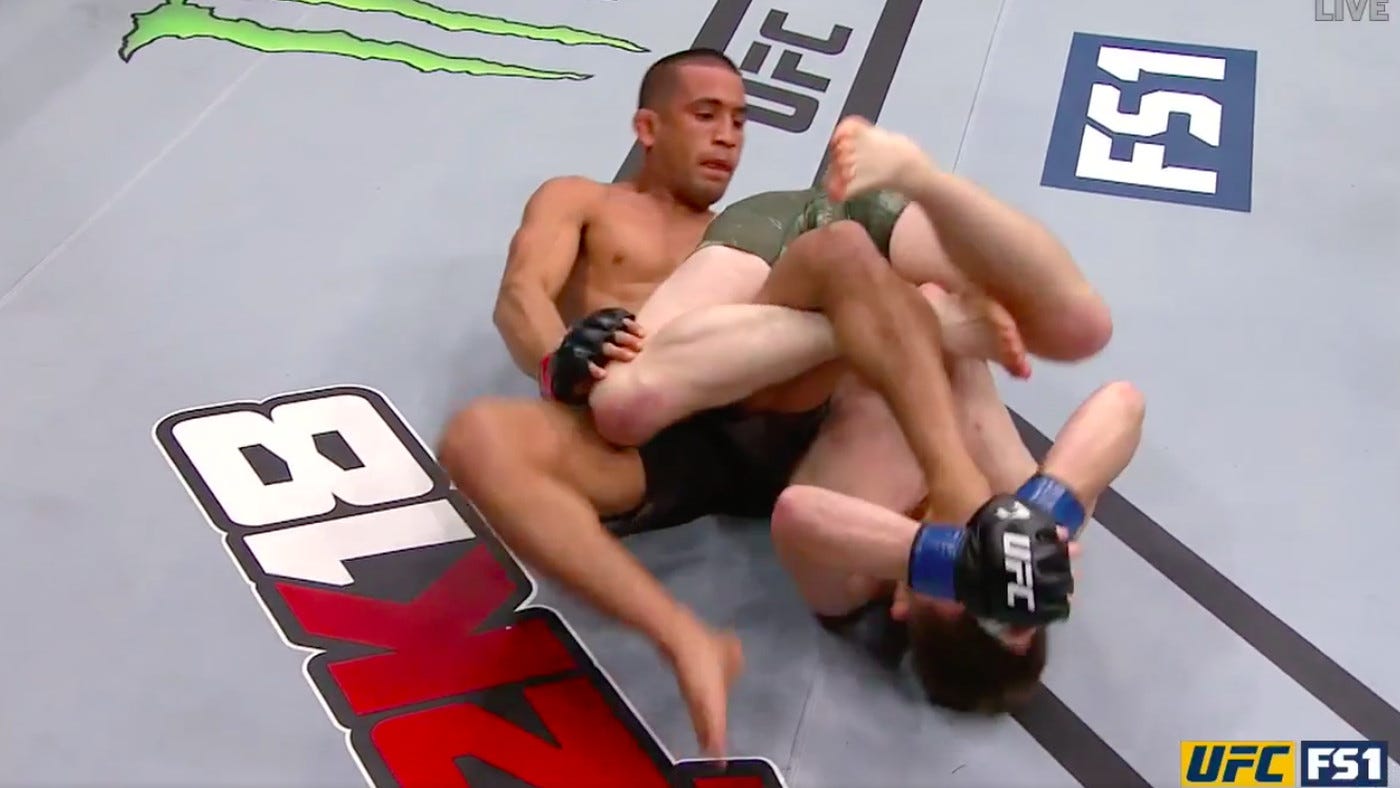


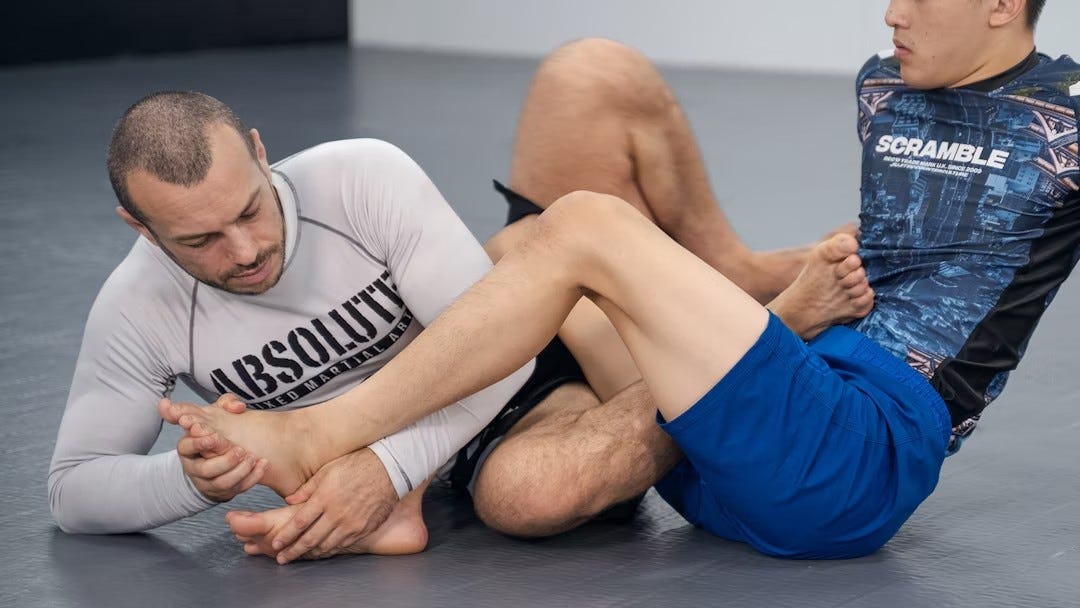
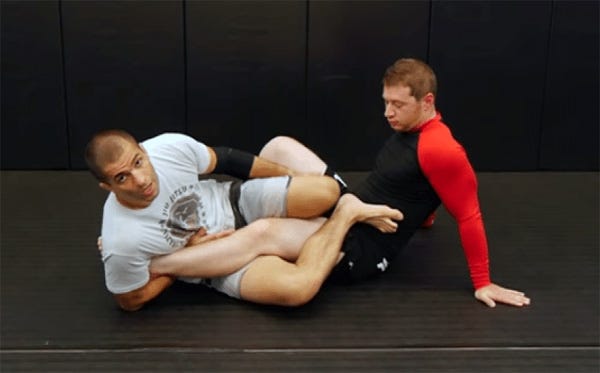

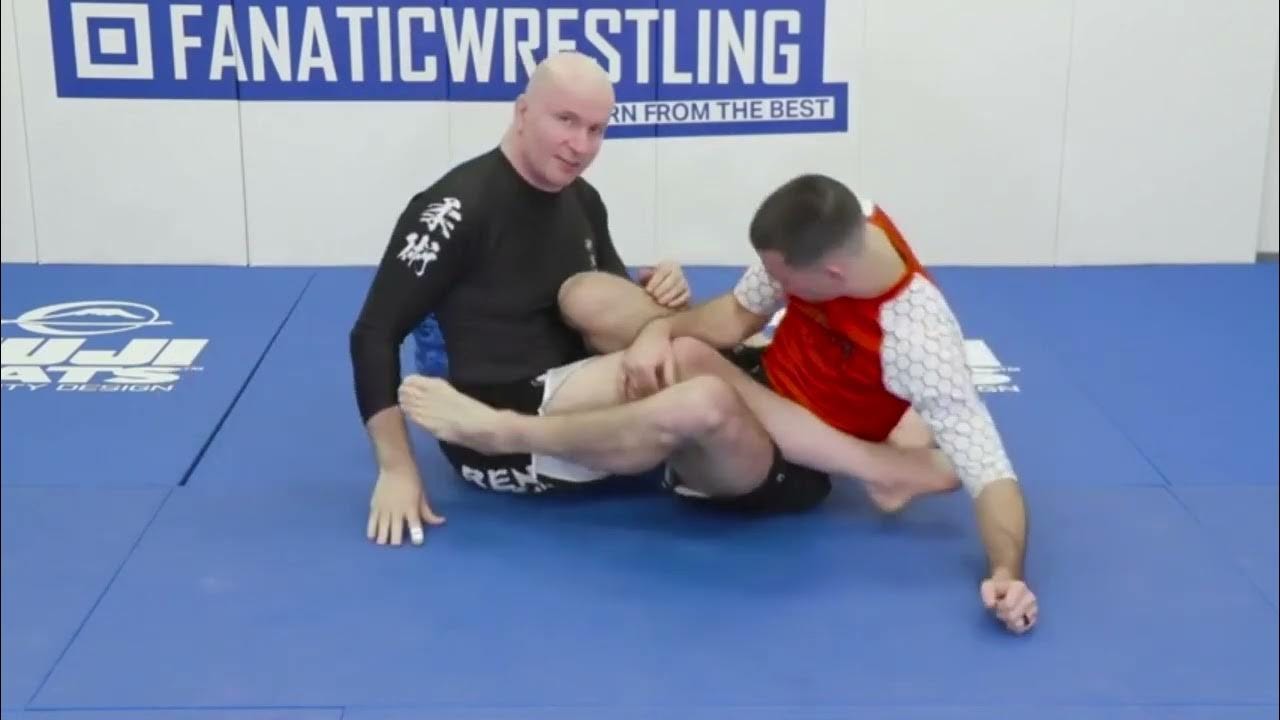
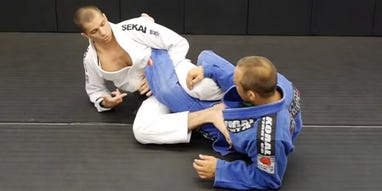


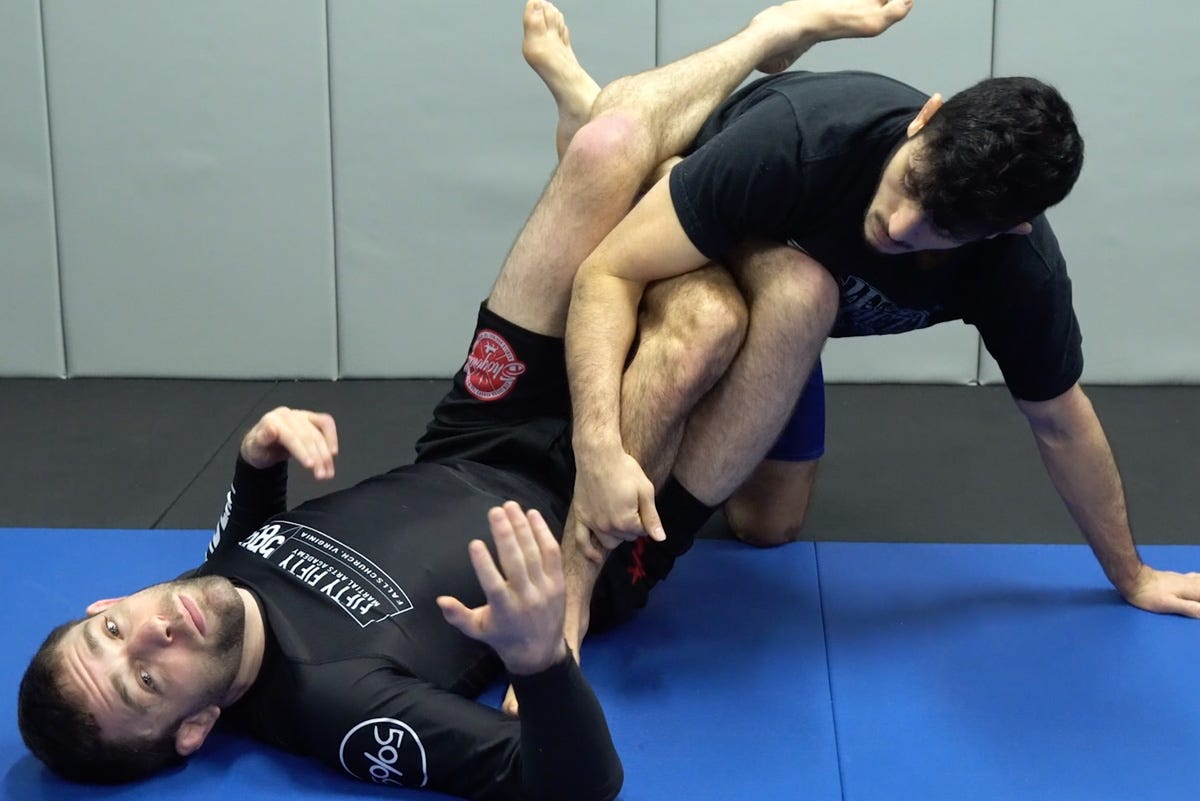


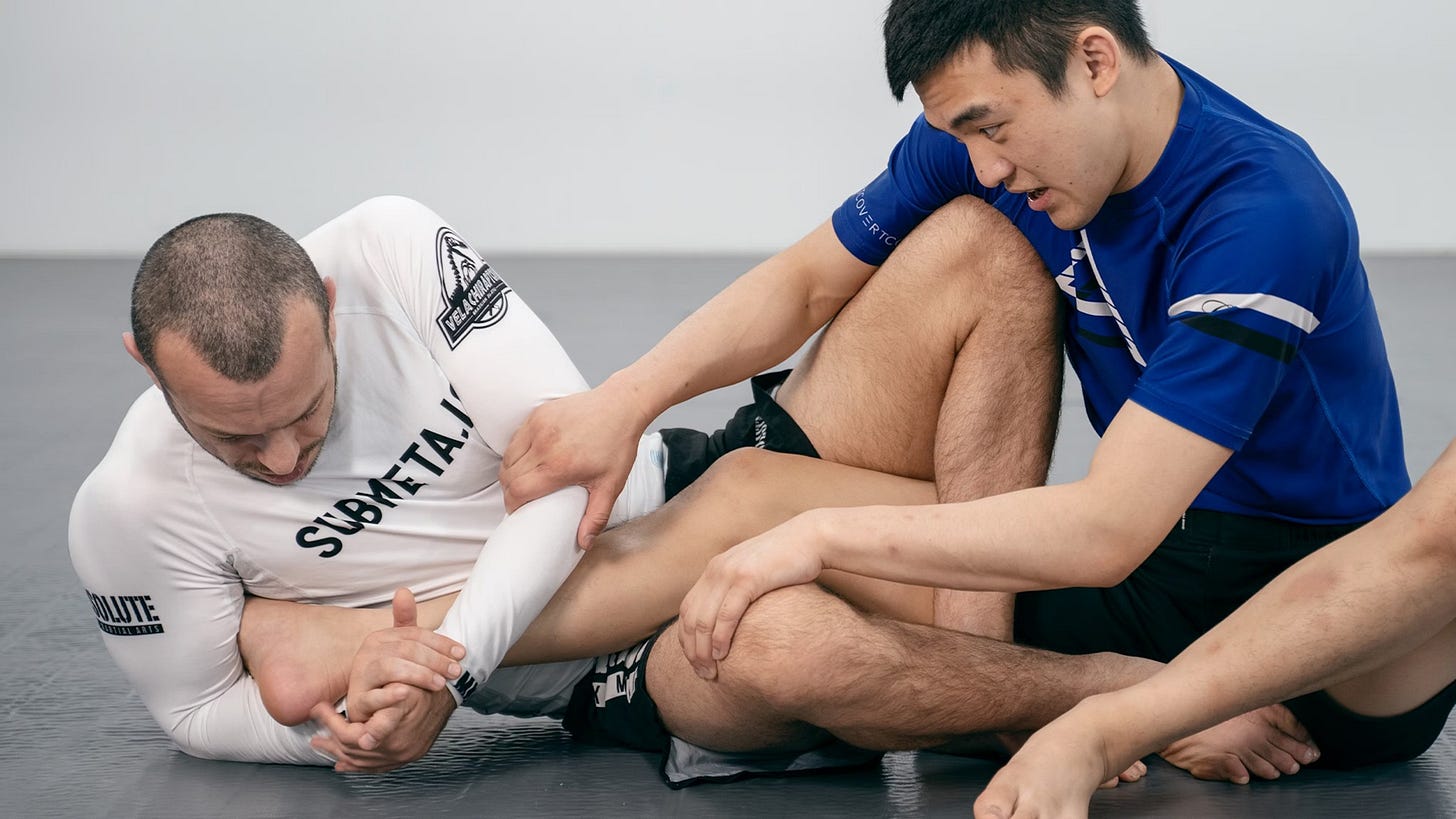

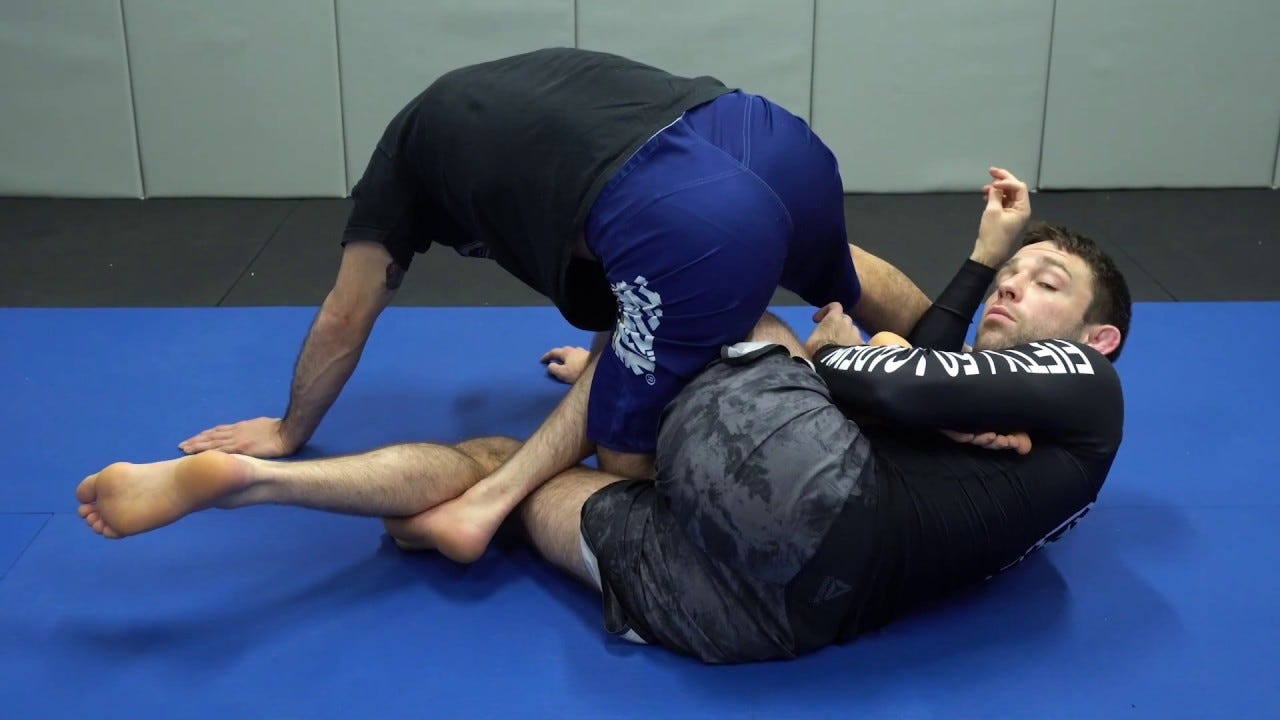
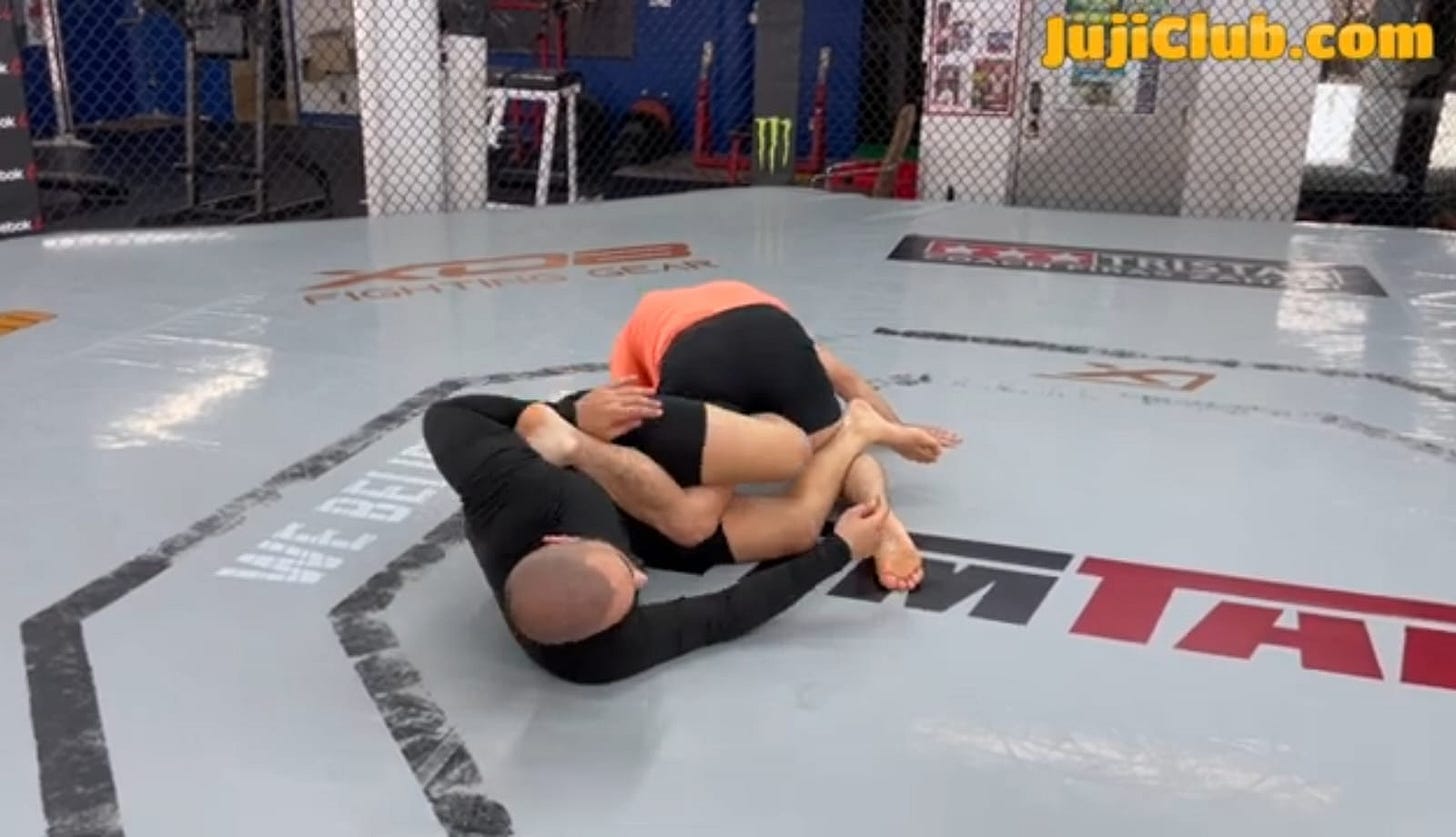
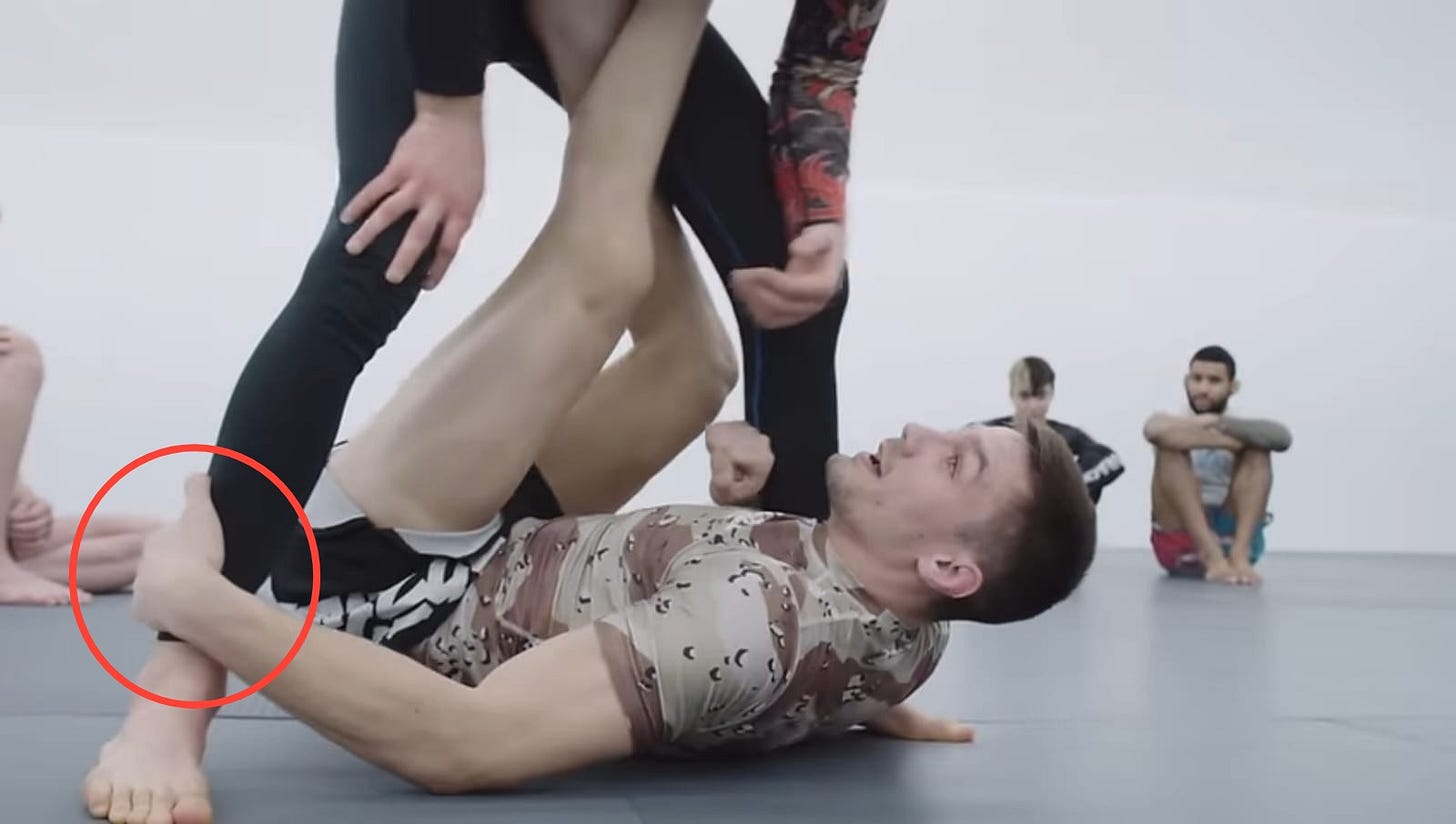
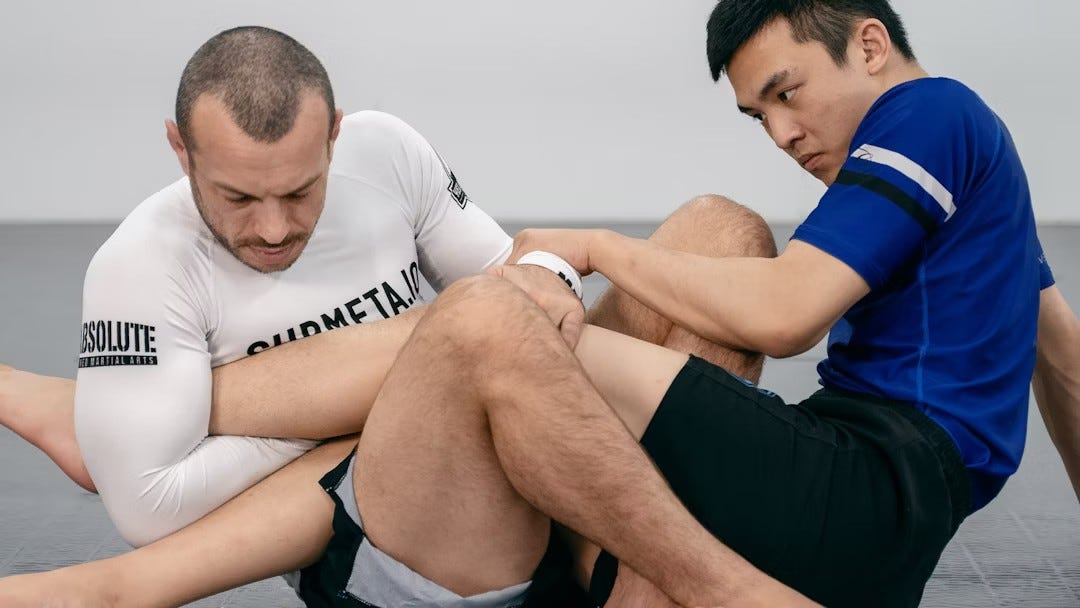
Really enjoyed this! Any thoughts on the k guard as a good entry to backside 50/50? I’ve seen good cases for the k guard being used as safer entry to leg locks in mma. Great article loving your stuff